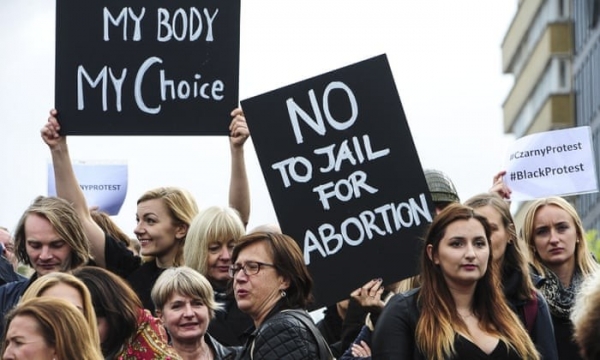The amendment, however, did not ensure that all women were enfranchised: Many women were still unable to vote because of restrictions related to race and ethnicity. Events will mark the milestone moment as well as the work of women who fought long after ratification to ensure that all Americans had access to the voting booth.
In 1964, Freedom Summer was launched. The voter registration campaign in Mississippi sought to bring attention to the violent and oppressive conditions and to highlight the fact that fewer than 10 percent of eligible Black voters in Mississippi were able to successfully, and safely, register. Women risked their lives to ensure that universal suffrage and the promise of democracy would be achieved.
Exploring post–19th Amendment voting rights activism through the experiences of women who were part of the Freedom Summer initiative helps students understand the long history and fight for voting rights.
EXPLORE ACTIVISM TOOLS
Fannie Lou Hamer, a daughter of sharecroppers who spent most of her early life working the cotton fields in Montgomery County, Mississippi, mobilized people as an organizer. She helped launch Freedom Summer and challenged the state’s Democratic Party’s all-white membership. Hamer’s speech before the Credentials Committee of the 1964 Democratic National Convention detailed the day-to-day horrors of racism in Mississippi and launched her to national prominence.
Exploring Hamer’s life and legacy through primary sources provides students with context about the social, political, and economic conditions in Mississippi during the 20th century. PBS Learning Media offers a teaching guide about Hamer that includes Harry Belafonte’s recollections of Hamer’s lasting impact. The firsthand account of her community organizing and activism can be used with the Library of Congress analysis process to help students discuss Hamer’s tactics and impact.
The life and legacy of Unita Blackwell, the first Black woman to serve as mayor in the state of Mississippi, provides another opportunity for students to engage with content about Freedom Summer. After meeting with civil rights workers in her hometown, Blackwell started to connect with neighbors in an effort to persuade them to register to vote. Her contributions provide students with the opportunity to consider how access to education and resources shapes one’s experiences.
Students can watch the interview with Blackwell from the documentary Eyes on the Prize and discuss the reasons why Blackwell, a daughter of sharecroppers who returned to work in the cotton fields after an eighth-grade education, decided to stay in Mississippi. After reading a New York Times piece about her leadership, students can explore how she leveraged support from community members, the most effective ways to engage support, and the power of regional understanding.
Another avenue to develop analytical skills is through a historical conversation strategy. Ask one group of students to assume the role of early 20th-century voting rights activists and another to assume the role of those who continued the fight, such as Hamer and Blackwell. Students can craft a dialogue between the historical figures, creating questions they would ask of each other as well as responses. With a focus on objectives, tactics, and the inclusive or exclusive nature of the activists’ work, students can develop a better understanding of changing goals and challenges during different periods of history.
USE MUSIC TO DEEPEN UNDERSTANDING
Incorporating Bernice Johnson Reagon’s experiences allows students to explore the power of music and collective protest. Reagon, the famed founder of the all-Black- women ensemble Sweet Honey in the Rock, was also a founding member of SNCC’s Freedom Singers, who used the song to unify disparate groups who were risking their lives in Mississippi.
Smithsonian Folkways Recordings provides students with a profile of Reagon as well as a sampling of her music. With a process provided by the Library of Congress, ask students to listen to each of the selections and observe what they hear. Then provide time for reflection and ask students “to generate and test hypotheses about the source.” Why was it recorded? What was the historical context of the music, and how is that reflected in the song? Encourage students to ask their own questions about the songs.
CONSIDER CORRESPONDENCE
Chude Pamela Allen, a white woman, volunteered to support voter registration and serve as a teacher in the Freedom Schools, an important component of the Freedom Summer initiative. Excerpts of Allen’s letters written from detail her experiences, fears, and awakenings.
Students can read and analyze Allen’s letters, and discuss what they reveal about her experience. How did she prioritize education in justice work? Students can read her own words about the shared goals of activists, as well as the deep divides that existed along racial and gender lines in movements for social change.
After reading the letters, students can craft their own letters home in the voices of Freedom Summer volunteers, including specific details about what they might have observed in 1964 Mississippi. Using Allen’s letters as a model, students can write about their own feelings and apprehension as well as share their plans for supporting the Freedom Summer work. What were the biggest challenges at the time? What would someone writing a letter during this period consider important? Encourage students to also consider the Freedom Schools Curriculum. What made it different from other educational institutions? How might a person crafting a letter write about the schools?
Including the stories of Freedom Summer activists and their place in the voting, history is integral to students’ understanding of the long road to equality. Connecting contemporary activism to the ratification of the 19th Amendment allows for a deeper understanding of the continued struggles for voting rights and access.
By Meg Honey








